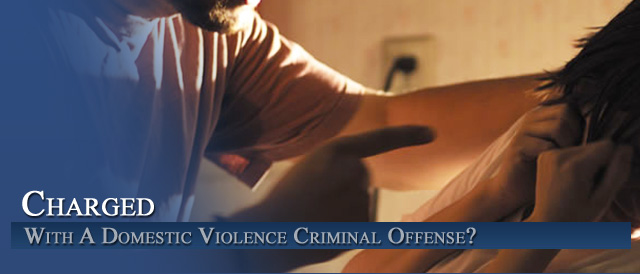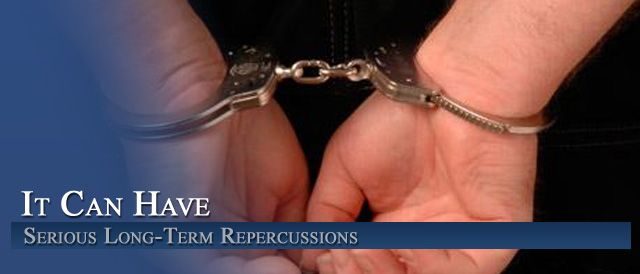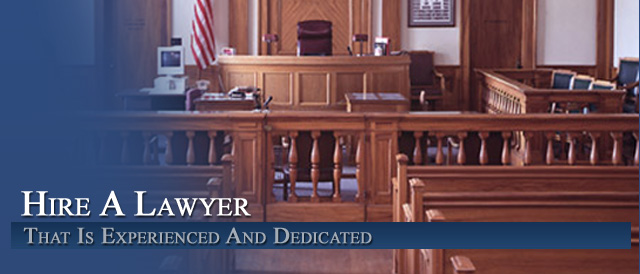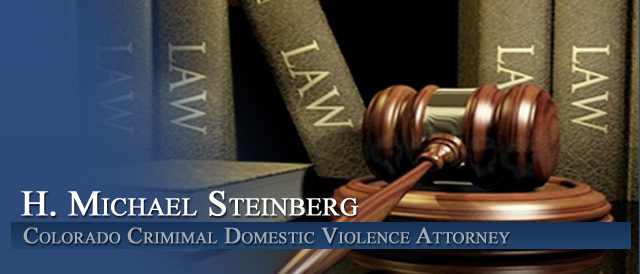




Understanding When Other Past Crimes or Bad Prior Acts Are Admitted at Trial in Colorado
Colorado Criminal Law- Admitting 404B Evidence of Other Crimes and Bad Acts
In Colorado trials for Domestic Violence and Sex Crimes Cases ¨C there is an alarming trned of the Court¡¯s permitting juries to hear of what is called “other crimes or bad acts” evidence. This webpage addresses the law that allows such evidence before the jury
Evidence of Prior Acts
Defendant also contends that the trial court reversibly erred by allowing the admission of evidence of prior acts. The People argue that all of the evidence was properly admitted. We agree with defendant only in part, and find no basis for reversal.
Colorado Rules of Evidence – 404(b) Evidence
Under Colorado Law – Evidence of a person¡¯s other acts may be admissible as “proof of motive, opportunity, intent, preparation, plan, knowledge, identity, or absence of mistake or accident, ” and for other relevant purposes. CRE 404(b).
The evidence must, however, be logically relevant to a fact in issue other than the character of the person who committed the other acts, and its probative value must not be substantially outweighed by the danger of unfair prejudice.
In a sample staling case – referred to on another page of this website – such evidence was admitted at trial (link)
The Facts of that case help us to understand how other bad acts and crimes evidence can be admitted at trial
Proceedings Before the Trial Court in the Stalking Case
Over defendant¡’s objections, the People introduced at the stalking trial the following testimony about the defendant¡¯s prior acts:
Defendant approached Ms. C while she was exercising in her apartment complex’s fitness room. His personal questions about where she lived and whether her husband was at home, and his observation that her chest was not sweating, made her uncomfortable. He mentioned that he had seen Ms. C earlier that day, and accurately described what she had been wearing. Finally, he closed the door to the fitness room, which Ms. C had propped open, and said that he was not going to hurt her. Frightened, Ms. C left the room.
Officer Lewis, who took Ms. C’s report and questioned defendant about the encounter in the fitness room, testified that defendant had commented that Ms. C “looked really fine” in the “tight ass jeans” he had seen her wearing earlier, and that he had been “reckless[ly] eyeballing” her.
Defendant “jumped out in front of” Ms. Z when she was walking alone, late at night, said she looked “fine, ” put his hand on her hip, and asked whether she wanted him. After Ms. Z told him she was not interested, defendant said that “it would only be fair if he gave [her] a head start.” Ms. Z ran, but was unsure whether defendant pursued her.
Officer Bromley, who took Ms. Z¡’s report and questioned defendant, testified that defendant stated that Ms. Z had been wearing “tight ass jeans, ” and that he “could have had the bitch if he wanted her.”
Ms. C passed defendant as the two were walking on a trail. Defendant uttered something to call Ms. J’s attention to him, and she saw that he had exposed himself and was masturbating.
Officer Brockman investigated Ms. J’s indecent exposure call, interviewed defendant, and presented Ms. J with a photo array from which she identified defendant.
B.S., a middle school student walking to school, and Ms. H, a woman driving nearby, noticed defendant walking up and down the street and, after passing B.S., changing direction to walk behind her. Ms. H offered, and B.S. accepted, a ride to school so she could avoid defendant.
How The Court Decides Whether to Admit Bad Acts Evidence
Whether to admit evidence of other acts is within the discretion of the trial judge, and the judge’s decision to admit such evidence will be upheld unless it was manifestly arbitrary, unreasonable, or unfair.
Analysis
A four-part test is applied to the admissibility of evidence of defendant¡’s prior acts.
The Courts consider:
(1) whether the purposes for which the evidence is proffered relate to a material fact;
(2) whether the evidence is logically relevant to the purposes for which it is offered;
(3) whether that relevance is independent of the intermediate inference of bad character;
and
(4) whether the evidence’s probative value is substantially outweighed by the danger of unfair prejudice. CRE 401, 403.
In this case the prosecution offered, and the court accepted, the evidence to show motive, intent, knowledge, preparation, common plan or scheme, opportunity, and state of mind.
The judge must review each purpose of the evidence as it relates to both the stalking and harassment charges in this case.
Material Fact
This first prong of the test asks whether the evidence is offered to prove a fact of consequence to the determination of the action.
The evidence in this case was offered to show defendant¡’s mental state, intent, knowledge, and motive. More specifically, it was offered to establish that defendant knew his advances toward Ms. R would cause a reasonable person either to fear for her safety or to suffer serious emotional distress, under former section 18-9-111(4)(b)(I) and (III); that he intended harass, annoy, or alarm her under section 18-9-111(1); and what his motivation was to do so.
The evidence was also offered to show opportunity, preparation, and common plan or scheme, specifically, that defendant committed the acts of stalking and harassment by approaching and following the victim in a public place.
Logical Relevance
Next, the court must consider whether the inferences relied upon by the prosecution could be drawn from the prior acts evidence, and whether the evidence supporting those inferences was logically relevant to the purposes for which it was offered.
Inferences
The DA argued that a jury could infer from defendant¡¯s prior acts that he (1) monitored women; (2) behaved in an invasive and inappropriate manner toward them; and (3) became angry when they expressed lack of interest.
Evidence’s Relevance to the Proffered Purposes
Based on these inferences, the evidence supporting them was logically relevant to the purposes for which it was offered.
Evidence suggesting defendant knew that his manner of approaching women caused them to experience fear and emotional distress tended to establish his knowledge that similar advances would have that effect on Ms. R. The fact that two women called the police (who contacted defendant) further reinforces the conclusion that defendant knew his conduct caused fear and emotional distress.
Further, the court decided – the evidence establishing defendant¡’s knowledge also was relevant to his intent and motive; that he knew the likely effect of his actions makes it more probable that he intended, and was motivated, to cause it by harassing, annoying, or alarming his victim.
Likewise, the evidence was logically relevant to those purposes related to the physical acts of stalking and harassment.
Evidence supporting an inference of defendant¡’s monitoring behavior made it more likely that, after observing Ms. R, defendant prepared to approach her and created an opportunity to do so. And evidence of defendant¡’s substantially similar encounter with Ms. C tended to establish a common plan or scheme to approach women in an invasive and inappropriate manner.
Inference Independent of Bad Character
Prior acts evidence is admissible only if its relevance is independent of an intermediate inference that a defendant has a bad character. CRE 404(b).
Rather than suggesting to the jury a subjective inference of bad character, the doctrine of chances required the jurors to make an objective determination about the probability that defendant could have had so many similar encounters, yet, as he claimed, have maintained an innocent belief that his advances were nonthreatening. Jurors could thus rely on their common sense and knowledge of human experience, rather than on a subjective impression of defendant¡’s character, to find his claim to an innocent state of mind improbable.
Probative Value and Danger of Unfair Prejudice
To balance the evidence¡’s probative value against the danger of unfair prejudice, the court must consider the importance of the material fact for which it is offered; whether that fact is disputed; the strength and extent of the chain of inferences necessary to establish that fact; and the availability of alternative means of proof.
To the extent the evidence was offered to prove the physical acts of the crimes charged, its probative value was negligible because those elements were not disputed, rendering the material facts of defendant¡’s actions relatively unimportant.
The court decided – as it often does – that the evidence¡’s probative value was considerable, and thus not substantially outweighed by its prejudicial effect. Because it tended to show defendant¡’s state of mind, it was of vital importance to the People¡’s ability to prove harassment and stalking.
Conclusion:
Though complicated – this case illustrates the series of tests applied by judges before they can admit “other crimes” evidence. Such evidence is usually devastating to the defense of a serious criminal matter ¨ it sends a message to the jury ¨well beyond the evidence proving or not proving the current charges – that this is a bad person… obviously this was never intended by our forefathers and the admission of this type of evidence should not ocurr.
Other Articles of Interest:
- Colorado Criminal Domestic Violence Law – The Unfairness Of The Admission of Evidence of Character Other Crimes, Wrongs, or Acts – The So Called 404B – Similar Transactions Evidence
- Limits On Hearsay Evidence – Colorado Domestic Violence Cases – The Crawford Decision
- Colorado Domestic Violence Cases – How Do I Get Off Of This Ride? Discharge Standards, Risk Categories and the Completion of Court Ordered Mandated Treatment – Part I
- Colorado Criminal Domestic Violence Law – Understanding The Colorado Laws Governing Dismissal In Colorado Domestic Violence Cases
- Understanding The Difference Between Colorado Domestic Violence And Actual Domestic Abuse












